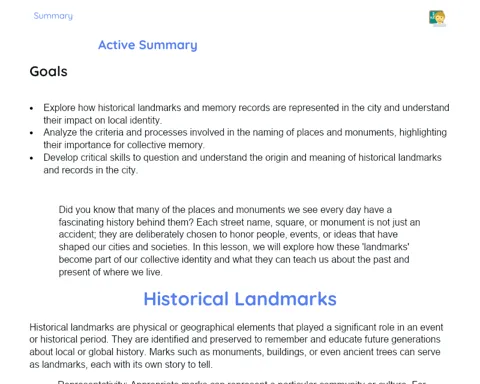Games and Play Through Time: A Historical and Practical Journey
Objectives
1. Compare current games and play with those from other times and places.
2. Identify the characteristics of games and play from different historical periods.
3. Stimulate curiosity and interest in history and playful culture.
4. Promote interaction and collaboration among students during practical activities.
Contextualization
Games and play have always been part of children's lives in all times and cultures. From races and tag in Ancient Greece to today's digital games, play is a way to learn, socialize, and develop important skills. Understanding how these activities have evolved helps us perceive social and technological changes over time and value the experiences that are part of our history. For example, many ancient games, such as the board game senet from Ancient Egypt, influenced the design of modern games, showing how history and culture intertwine with playful activities.
Relevance of the Theme
Understanding the evolution of games and playful activities is essential for valuing our history and culture. Furthermore, in the current context, where the digital gaming industry and entertainment are constantly growing, knowing the origin and transformation of these games can inspire new creations and innovations. Skills developed through games, such as creativity, teamwork, and problem-solving, are highly valued in the job market, making this theme relevant not only academically but also professionally.
Evolution of Games and Play
Games and play have evolved significantly over time, reflecting social, cultural, and technological changes. From the simple and community-based activities of ancient societies to today's complex digital games, this evolution demonstrates the human capacity to innovate and adapt to new contexts.
-
Ancient games often used natural and simple materials, such as stones and sticks.
-
Modern games often involve advanced technology and digital graphics.
-
The evolution of games reflects changes in society, such as increased leisure time and technological development.
Comparison between Ancient and Modern Games
Comparing ancient and modern games helps us understand the cultural and technological changes that have occurred over time. While ancient games were more physical and community-based, modern games can be individual and digital, showing a diversification in entertainment forms.
-
Ancient games were often played outdoors and in groups.
-
Modern games can be played online, allowing interaction with players from around the world.
-
The complexity of modern games often requires technical skills and specific knowledge.
Cultural Influence on Games and Play
Games and play are strongly influenced by the culture in which they are developed. They reflect the values, traditions, and beliefs of a society and can vary widely from region to region. Understanding this cultural influence helps us appreciate the diversity and richness of playful practices around the world.
-
Traditional games from different cultures often have unique meanings and stories.
-
Play activities can teach important aspects of culture, such as social rules and practical skills.
-
Globalization has enabled the exchange and adaptation of games between different cultures.
Practical Applications
- Game Design: Professionals use historical knowledge of games to create new games that are innovative and appealing.
- Education: Historical games can be used as educational tools to teach about different periods and cultures.
- Psychology: Studies on the evolution of games help understand the cognitive and social development of children over time.
Key Terms
-
Evolution: The process of development and transformation of games and play over time.
-
Game Design: The art and science of creating games, considering technical, aesthetic, and entertainment aspects.
-
Culture: The set of values, traditions, beliefs, and practices that characterize a society and influence its games and play.
Questions
-
How do you think the games and play you enjoy today will be viewed in the future?
-
In what ways might technological changes continue to influence games and play?
-
What important skills do you think you have developed through games? How can these skills be applied in the job market?
Conclusion
To Reflect
Throughout this lesson, we explored how games and play have evolved over time, reflecting the social, cultural, and technological changes of different eras. We learned that ancient games often used simple and natural materials, while modern games involve advanced technology and digital graphics, demonstrating humanity's ability to innovate and adapt to new contexts. We also discussed how culture influences games and play, and how globalization allows for the exchange and adaptation of these activities across cultures. By understanding this evolution, we appreciate our history and prepare to apply important skills, such as creativity, teamwork, and problem-solving, in our lives and future careers.
Mini Challenge - Creating a Game of the Future
Now that you have learned about the evolution of games and play, it’s time to use your creativity to design a game that could be popular in the future.
- Think about how technological and cultural changes might influence games in the future.
- Sketch a draft of your game, including the rules and the necessary materials.
- Write a brief description of how the game will be played and what skills it will develop.
- Share your project with your classmates and discuss everyone’s ideas.



